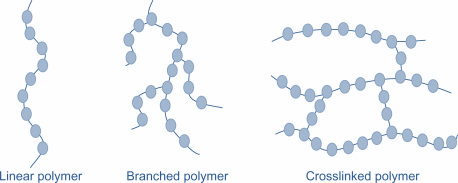
Which of the following is an example of copolymer?
A.Buna-S
B.Teflon
C.PVC
D.Polypropylene
Answer
218.7k+ views
Hint: Copolymer is basically a polymer that is made up of two or more monomer species. Moreover, many commercially important polymers are copolymers. The polymerization of monomers into copolymers is called as copolymerization.
Complete step by step answer:
A polymer is a large molecule or a macromolecule which is further a combination of many subunits. They can be naturally found in plants and animals or are man-made. Basically, there are three types of polymers:
1.Natural
2.Synthetic
3.Semi-synthetic
Basically, when two different types of monomers are joined together in the same polymer chain, then the polymer formed is known as a co-polymer. Moreover, the process in which a polymer is formed from multiple species of monomers, is known as copolymerization and the copolymers obtained by copolymerization of two monomer species are called as biopolymers.
Now, co- polymers are classified as:
1.Linear copolymers (single chain)
2.Branched copolymers (polymeric chain)
3.Cross-linked polymer (composed of bifunctional and trifunctional monomers)
The structures are as shown:

Now, among the given options Buna-S is a copolymer. It is made up of two monomers i.e. 1,3- butadiene and Styrene. It is also known as Styrene-Butadiene Rubber. It is used for making automobile tyres and rubber soles. The polymerization is as shown:

Hence, option A is correct.
Note: Teflon is made up of a chemical compound named polytetrafluoroethylene which is a synthetic fluoropolymer. This compound is used as the coating for non-stick pans as they are hydrophobic and have a high resistance capacity towards heat. Moreover, PVC is a polymer which is made from polymerization of vinyl chloride and is used in products such as pipes, bottles etc.
Complete step by step answer:
A polymer is a large molecule or a macromolecule which is further a combination of many subunits. They can be naturally found in plants and animals or are man-made. Basically, there are three types of polymers:
1.Natural
2.Synthetic
3.Semi-synthetic
Basically, when two different types of monomers are joined together in the same polymer chain, then the polymer formed is known as a co-polymer. Moreover, the process in which a polymer is formed from multiple species of monomers, is known as copolymerization and the copolymers obtained by copolymerization of two monomer species are called as biopolymers.
Now, co- polymers are classified as:
1.Linear copolymers (single chain)
2.Branched copolymers (polymeric chain)
3.Cross-linked polymer (composed of bifunctional and trifunctional monomers)
The structures are as shown:

Now, among the given options Buna-S is a copolymer. It is made up of two monomers i.e. 1,3- butadiene and Styrene. It is also known as Styrene-Butadiene Rubber. It is used for making automobile tyres and rubber soles. The polymerization is as shown:

Hence, option A is correct.
Note: Teflon is made up of a chemical compound named polytetrafluoroethylene which is a synthetic fluoropolymer. This compound is used as the coating for non-stick pans as they are hydrophobic and have a high resistance capacity towards heat. Moreover, PVC is a polymer which is made from polymerization of vinyl chloride and is used in products such as pipes, bottles etc.
Recently Updated Pages
Is PPh3 a strong ligand class 12 chemistry JEE_Main

Full name of DDT is A 111trichloro22bispchlorophenyl class 12 chemistry JEE_Main

Sodium acetate on heating with soda lime produce A class 12 chemistry JEE_Main

Find the isoelectric point pI of Lysine A 556 B 974 class 12 chemistry JEE_Main

The order of basicity among the following compounds class 12 chemistry JEE_Main

The number of isomers in C4H10O are a7 b8 c6 d5 class 12 chemistry JEE_Main

Trending doubts
JEE Main 2026: Application Form Open, Exam Dates, Syllabus, Eligibility & Question Papers

Derivation of Equation of Trajectory Explained for Students

Hybridisation in Chemistry – Concept, Types & Applications

Understanding the Angle of Deviation in a Prism

Understanding Collisions: Types and Examples for Students

Understanding Atomic Structure for Beginners

Other Pages
NCERT Solutions For Class 12 Chemistry Chapter 1 Solutions - 2025-26

NCERT Solutions for Class 12 Chemistry Chapter Chapter 7 Alcohol Phenol and Ether

NCERT Solutions ForClass 12 Chemistry Chapter Chapter 8 Aldehydes Ketones And Carboxylic Acids

JEE Advanced Marks vs Ranks 2025: Understanding Category-wise Qualifying Marks and Previous Year Cut-offs

Haloalkanes and Haloarenes Class 12 Chemistry Chapter 6 CBSE Notes - 2025-26

Solutions Class 12 Chemistry Chapter 1 CBSE Notes - 2025-26




